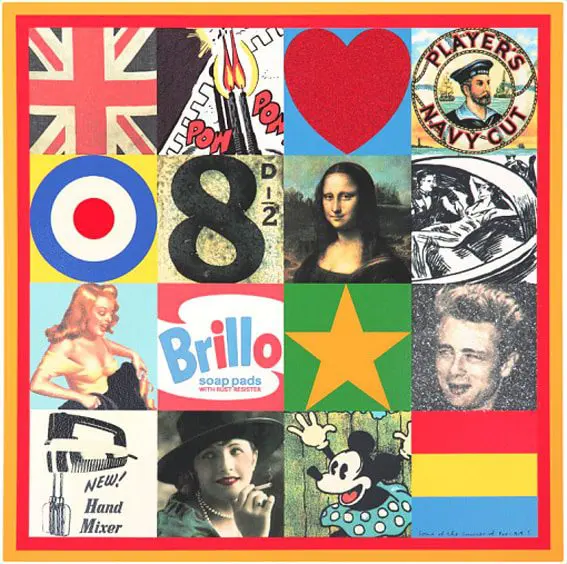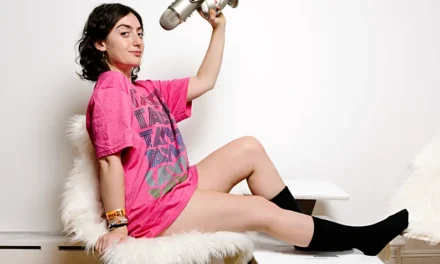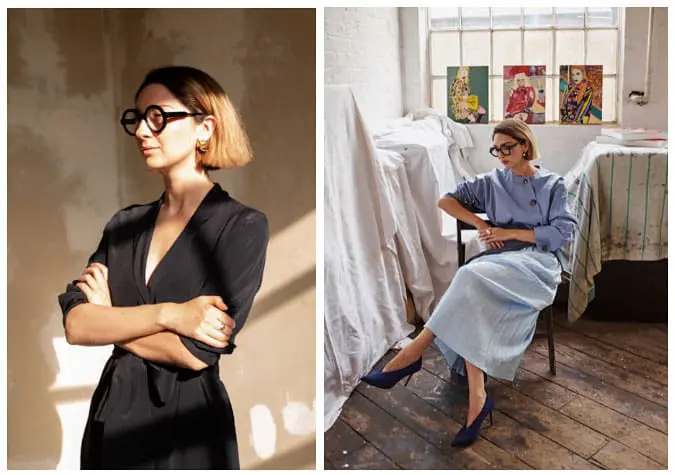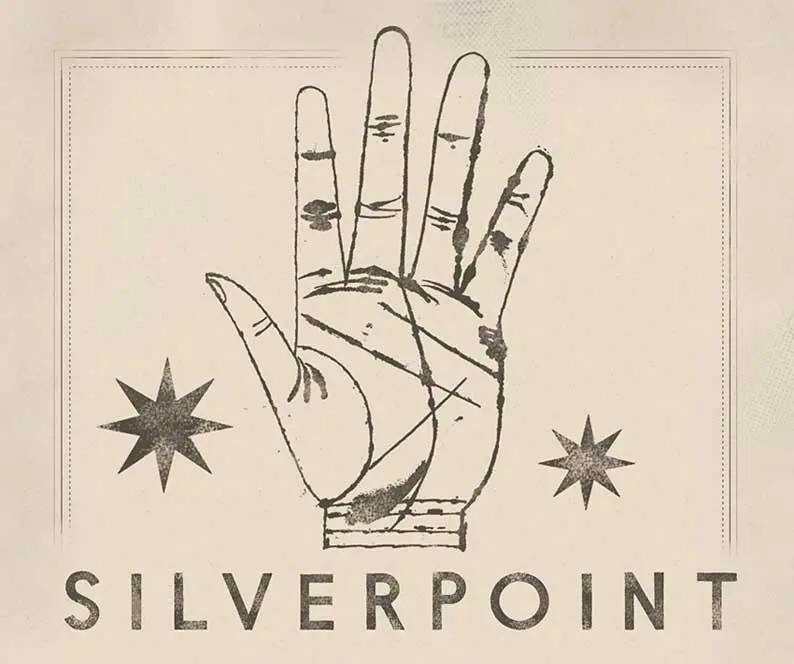British artists who shaped the pop art movement – words Al Woods
Though pop art is commonly associated with the work of Americans like Andy Warhol and Roy Lichtenstein, there would be no soup cans or WHAAM!s without the work of a few forward-thinking Brits a whole decade earlier. As the UK was recovering from the destruction of the Second World War, the country’s young artists looked to America’s consumerist boom for inspiration, as well as a sense of escape.
The seeds of pop art were sewn by Scottish artist Eduardo Paolozzi in 1952. Having founded the Independent Group (IG), a collective of young artists keen to challenge the traditional views of fine art, he used their first meeting to present a selection of his collages called the Bunk series. One, entitled I Was a Rich Man’s Plaything (1947), was both the first work to incorporate American advertising and the first to use the word “pop”. This inspired the group to focus on American culture and, in doing so, blur the lines between fine art and graphic design.
By borrowing material from across the Atlantic, the first British wave of pop artists started to challenge the distinction between high and low culture, individuality and mass production and art and commerce. Here, we look at the British artists who turned their backs on traditional techniques and shaped the pop art movement that took the world by storm.

Richard Hamilton
Pop art was first introduced to the world in 1956 in the “This is Tomorrow” exhibition at London’s Whitechapel Gallery. Richard Hamilton, a member of the IG, was key in defining the aims of the event, and showcased his piece Just what is it that makes today’s homes so different, so appealing? This collage created a contemporary interior using images from American magazines including various domestic appliances, a muscleman and a naked woman. The couple was supposed to represent a modern-day Adam and Eve, surrounded by the temptations of post-war American consumerism. Hamilton’s collage has since been called the “first genuine work of Pop”.
A year later, he established the formal definition of pop art: “Popular, transient, expendable, low-cost, mass-produced, young, witty, sexy, gimmicky, glamorous, and Big Business.” With that, Hamilton overturned the idea that art should be separate from commerce, establishing the artist as not just a contributor to, but also a consumer of popular culture. Hamilton’s vision paved the way for every future pop artist, regardless of where they hailed from.

Patrick Caulfield
Though Patrick Caulfield has been associated with pop art since 1964, he rejected the label throughout his lifetime and considered himself a more formal artist. Best known for his striking still lifes and interiors, Caulfield focused on everyday scenes and objects, as if viewing domestic life through a window. He used signature thick black lines and bold blocks of color, with no visible brushstrokes, to experiment with perspective. An example of this isStill Life with Dagger (1963) where the space between the objects is unclear and ambiguous.
Some early notable works included Portrait of Juan Gris (1963), whom Caulfield particularly admired as an artist. He often used the compositional devices of Gris’ still lifes, particularly with regard to different viewpoints, in his own work. Another of Caulfield’s pieces, Pottery (1969), reflected this playful approach by inviting people to view each individual object from a new perspective. His focus on mundane cultural objects, flat planes of color, bold geometrics and harsh outlines are all characteristics still associated with pop art today.
Peter Blake
Peter Blake, commonly referred to as the godfather of British pop art, had a huge interest in US culture and incorporated this into his work by blending American imagery with historic art references. Examples of this were shown in On the Balcony (1955-1957), which mixed imagery from traditional paintings with modern elements like badges and magazines. Meanwhile, Self-Portrait with Badges (1961)depicted the artist as a genuine consumer of popular culture, wearing a denim jacket covered in baseball badges and holding an Elvis Presley magazine.
Blake is best known for co-designing the iconic album cover for the Beatles’ Sgt. Pepper’s Lonely Hearts Club Band with his then-wife Jann Haworth. He used his signature collage style to depict the group alongside life-sized cut-outs of the most famous figures in popular culture, such as Marlon Brando and Marilyn Monroe. The sleeve has been imitated countless times, and is still considered one of the most impressive and widely-seen works of pop art.

David Hockney
Like Blake, David Hockney became a leading figure in British pop art after featuring in the Young Contemporaries exhibition at London’s Whitechapel Gallery in 1961. As many pop artists did, he used flat planes of colour to play with the sense of distance and reference the visuals seen in advertising. However, his passion for cubism meant he stood out from most of his contemporaries, as perfectly exemplified in one of his most famous pieces, A Bigger Splash(1967).
The work was inspired by a photograph Hockney had seen in a book on the subject of swimming pools which prompted him to recreate the split-second moment in a painting. This resulted in a dynamically-depicted splash, which provided a striking contrast to the rigid geometry of everything else in the image, like the house, palm trees and diving board. By fusing pop art and cubism, Hockney created a disjointed effect that evoked both artificiality and stylization. Hockney’s legacy also inspired contemporary artists like Jonas Wood and Daniel Heidkamp, both of whom show elements of his style of pop art in some of their work. Hockney himself, meanwhile, went on to be dubbed Britain’s most influential artist.





